
Comstock Inc. (NYSE: LODE) ("Comstock" and the "Company") today announced advances on amended agreements with RenFuel K2B AB ("RenFuel") involving the development of RenFuel's pre-existing, planned biorefinery project at a pulp and paper mill in Sweden. The amendments also anticipate expanding the scope of the Comstock partnership with RenFuel in the European markets.
These amendments support the liquidation of RenFuel K2B Lignolproduktion AB, a majority owned RenFuel subsidiary originally formed to administer RenFuel's previously planned Swedish biorefinery as part of a joint venture with Preem (the "RenFuel-Preem JV" or the "JV"), thereby better positioning both parties for construction and operation of a larger scale commercial facility based on the joint Comstock-RenFuel technologies throughout Europe, following construction of Comstock's first planned facilities in the Americas. The liquidation of the RenFuel-Preem JV does not alter any of the agreements or terms between Comstock and RenFuel, other than Comstock declining its option to step into the JV. Neither Comstock nor RenFuel have any funding obligations into the JV and are not, in any way, subject to any of the liquidation proceedings.
Sven Löchen, RenFuel's chief executive officer stated, "The subsidiary liquidation is important to streamlining our structure in anticipation of scaling our process together with Comstock's planned facilities, both in the Americas and Europe. We are excited by our partnership and the significantly expanded markets of our joint technologies."
Corrado De Gasperis, Comstock's executive chairman and chief executive officer added, "Comstock has decided to prioritize various opportunities for construction commercial facilities based on joint applications of Comstock's and RenFuel's technologies in the Americas, including an initial 50,000 TPY facility and at least one 1,000,000 TPY facility primarily designed to convert qualified biomass feedstocks into Sustainable Aviation Fuel and Renewable Diesel. This is consistent with all of the ongoing discussions with our strategic and capital partners."
Comstock's proprietary technologies are proven to convert lignocellulosic biomass into Cellulosic Ethanol and proprietary Bioleum biointermediate blends at extraordinary yields exceeding 100 gallons per dry tonne of biomass on a gasoline gallon equivalent basis ("GGE"), and market-leading, extremely low carbon intensity ("CI") scores of 15. Comstock is already using RenFuel's patented catalytic esterification technology to refine its proprietary Bioleum derivatives into Hydrodeoxygenated Bioleum Oil ("HBO"), for use by advanced biofuel refineries in blending with, diversifying, and extending conventional hydroprocessed fat, oil, and grease feedstocks that can simultaneously produce SAF and Renewable Diesel Fuel. Comstock holds the exclusive license to RenFuel's refining technologies in North America, Central America, and South America.
About RenFuel K2B AB
RenFuel innovates technologies that contribute to decarbonization and circularity by effectively turning under-utilized biomass waste and residues into renewable fuels and materials. To learn more, please visit www.renfuel.se .
About Comstock Inc.
Comstock Inc. (NYSE: LODE) commercializes innovative technologies that contribute to global decarbonization by efficiently converting under-utilized natural resources, primarily, woody biomass into net zero renewable fuels, end-of-life metal extraction, and generative AI-enabled advanced materials synthesis and mineral discovery. To learn more, please visit www.comstock.inc .
Comstock Social Media Policy
Comstock Inc. has used, and intends to continue using, its investor relations link and main website at www.comstock.inc in addition to its Twitter , LinkedIn and YouTube accounts, as means of disclosing material non-public information and for complying with its disclosure obligations under Regulation FD.
CONTACTS:
For investor inquiries:
RB Milestone Group LLC
Tel (203) 487-2759
ir@comstockinc.com
For media inquiries or questions:
Comstock Inc., Zach Spencer
Tel (775) 847-7532
questions@comstockinc.com
Forward Looking Statements
This press release and any related calls or discussions may include forward-looking statements within the meaning of Section 27A of the Securities Act of 1933, as amended, and Section 21E of the Securities Exchange Act of 1934, as amended. All statements, other than statements of historical facts, are forward-looking statements. The words "believe," "expect," "anticipate," "estimate," "project," "plan," "should," "intend," "may," "will," "would," "potential" and similar expressions identify forward-looking statements but are not the exclusive means of doing so. Forward-looking statements include statements about matters such as: future market conditions; future explorations or acquisitions; future changes in our research, development and exploration activities; future financial, natural, and social gains; future prices and sales of, and demand for, our products and services; land entitlements and uses; permits; production capacity and operations; operating and overhead costs; future capital expenditures and their impact on us; operational and management changes (including changes in the Board of Directors); changes in business strategies, planning and tactics; future employment and contributions of personnel, including consultants; future land and asset sales; investments, acquisitions, joint ventures, strategic alliances, business combinations, operational, tax, financial and restructuring initiatives, including the nature, timing and accounting for restructuring charges, derivative assets and liabilities and the impact thereof; contingencies; litigation, administrative or arbitration proceedings; environmental compliance and changes in the regulatory environment; offerings, limitations on sales or offering of equity or debt securities, including asset sales and associated costs; business opportunities, growth rates, future working capital, needs, revenues, variable costs, throughput rates, operating expenses, debt levels, cash flows, margins, taxes and earnings. These statements are based on assumptions and assessments made by our management in light of their experience and their perception of historical and current trends, current conditions, possible future developments and other factors they believe to be appropriate. Forward-looking statements are not guarantees, representations or warranties and are subject to risks and uncertainties, many of which are unforeseeable and beyond our control and could cause actual results, developments, and business decisions to differ materially from those contemplated by such forward-looking statements. Some of those risks and uncertainties include the risk factors set forth in our filings with the SEC and the following: adverse effects of climate changes or natural disasters; adverse effects of global or regional pandemic disease spread or other crises; global economic and capital market uncertainties; the speculative nature of gold or mineral exploration, and lithium, nickel and cobalt recycling, including risks of diminishing quantities or grades of qualified resources; operational or technical difficulties in connection with exploration, metal recycling, processing or mining activities; costs, hazards and uncertainties associated with precious and other metal based activities, including environmentally friendly and economically enhancing clean mining and processing technologies, precious metal exploration, resource development, economic feasibility assessment and cash generating mineral production; costs, hazards and uncertainties associated with metal recycling, processing or mining activities; contests over our title to properties; potential dilution to our stockholders from our stock issuances, recapitalization and balance sheet restructuring activities; potential inability to comply with applicable government regulations or law; adoption of or changes in legislation or regulations adversely affecting our businesses; permitting constraints or delays; challenges to, or potential inability to, achieve the benefits of business opportunities that may be presented to, or pursued by, us, including those involving battery technology and efficacy, quantum computing and generative artificial intelligence supported advanced materials development, development of cellulosic technology in bio-fuels and related material production; commercialization of cellulosic technology in bio-fuels and generative artificial intelligence development services; ability to successfully identify, finance, complete and integrate acquisitions, joint ventures, strategic alliances, business combinations, asset sales, and investments that we may be party to in the future; changes in the United States or other monetary or fiscal policies or regulations; interruptions in our production capabilities due to capital constraints; equipment failures; fluctuation of prices for gold or certain other commodities (such as silver, zinc, lithium, nickel, cobalt, cyanide, water, diesel, gasoline and alternative fuels and electricity); changes in generally accepted accounting principles; adverse effects of war, mass shooting, terrorism and geopolitical events; potential inability to implement our business strategies; potential inability to grow revenues; potential inability to attract and retain key personnel; interruptions in delivery of critical supplies, equipment and raw materials due to credit or other limitations imposed by vendors; assertion of claims, lawsuits and proceedings against us; potential inability to satisfy debt and lease obligations; potential inability to maintain an effective system of internal controls over financial reporting; potential inability or failure to timely file periodic reports with the Securities and Exchange Commission; potential inability to list our securities on any securities exchange or market or maintain the listing of our securities; and work stoppages or other labor difficulties. Occurrence of such events or circumstances could have a material adverse effect on our business, financial condition, results of operations or cash flows, or the market price of our securities. All subsequent written and oral forward-looking statements by or attributable to us or persons acting on our behalf are expressly qualified in their entirety by these factors. Except as may be required by securities or other law, we undertake no obligation to publicly update or revise any forward-looking statements, whether as a result of new information, future events, or otherwise. Neither this press release nor any related calls or discussions constitutes an offer to sell, the solicitation of an offer to buy or a recommendation with respect to any securities of the Company, the fund, or any other issuer. Neither this press release nor any related calls or discussions constitutes an offer to sell, the solicitation of an offer to buy or a recommendation with respect to any securities of the Company, the fund, or any other issuers.

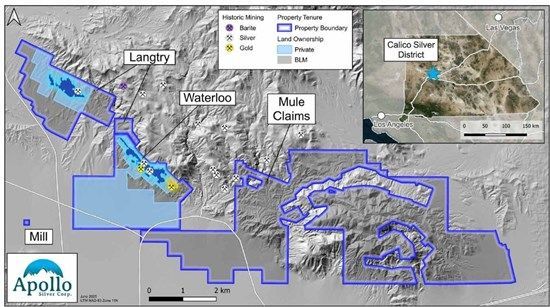

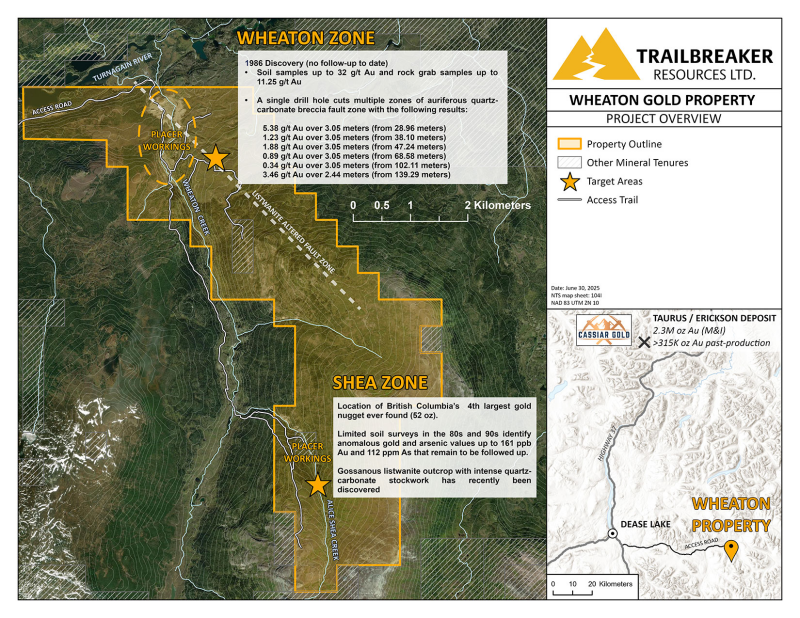
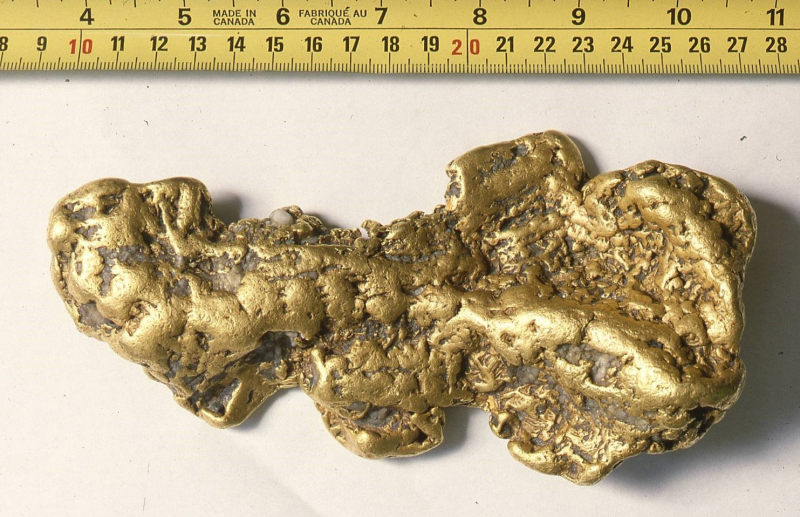
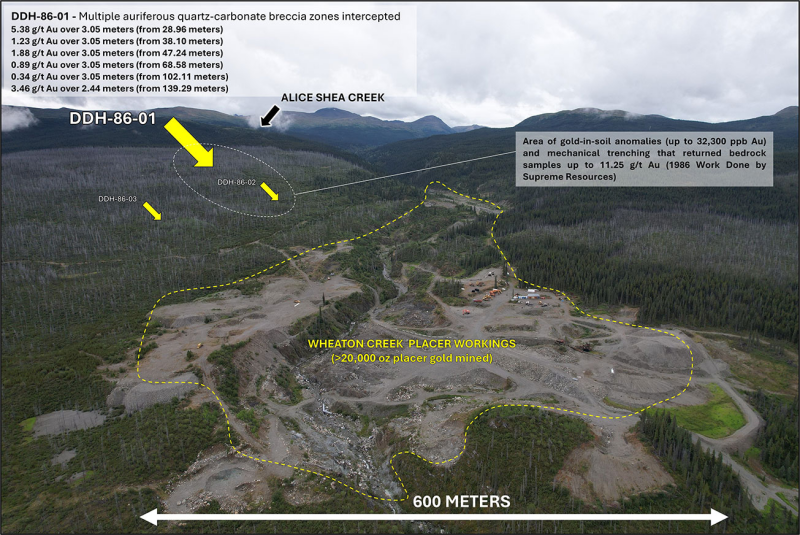
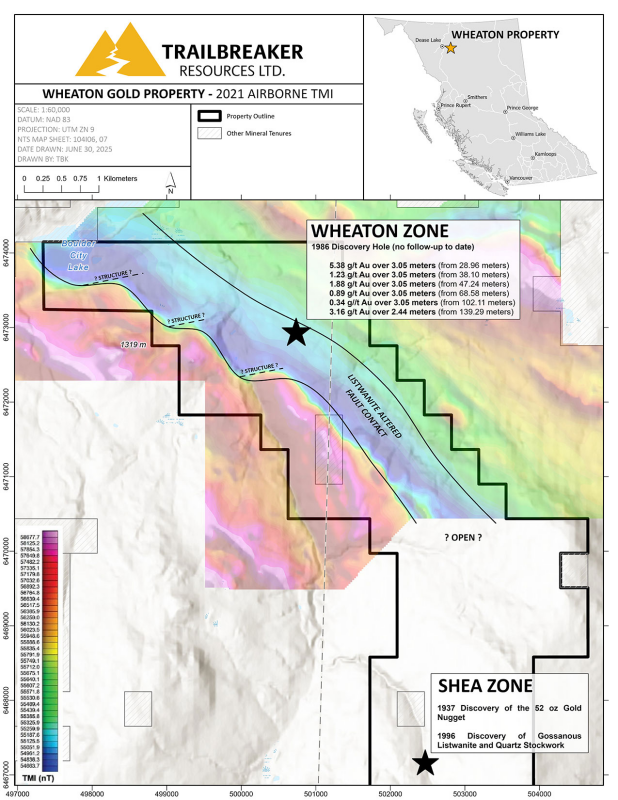
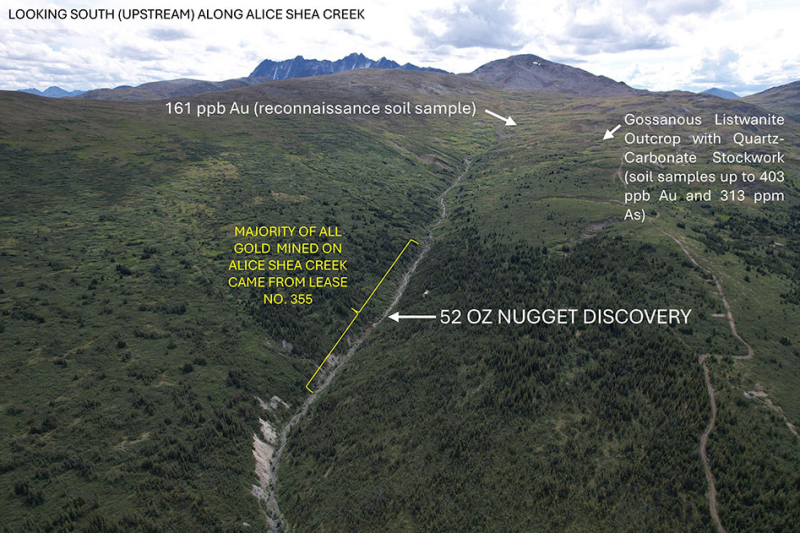
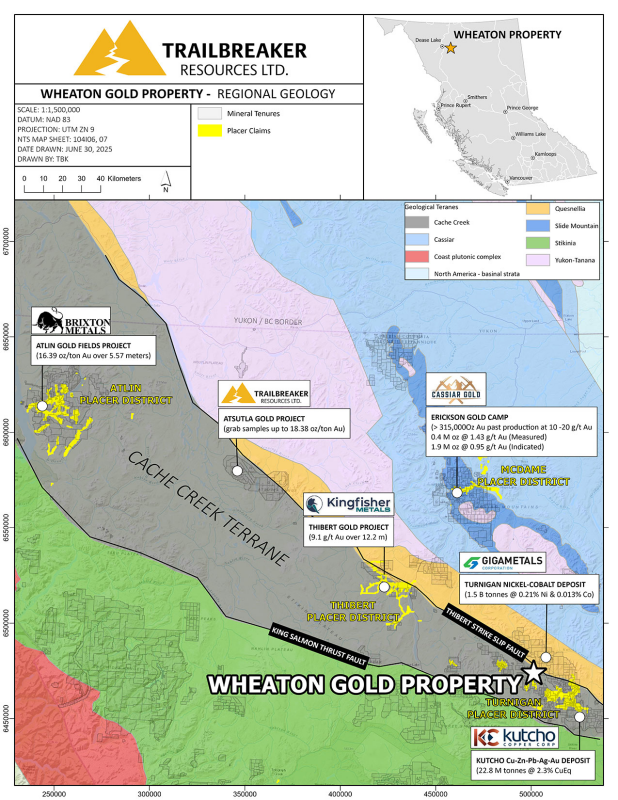
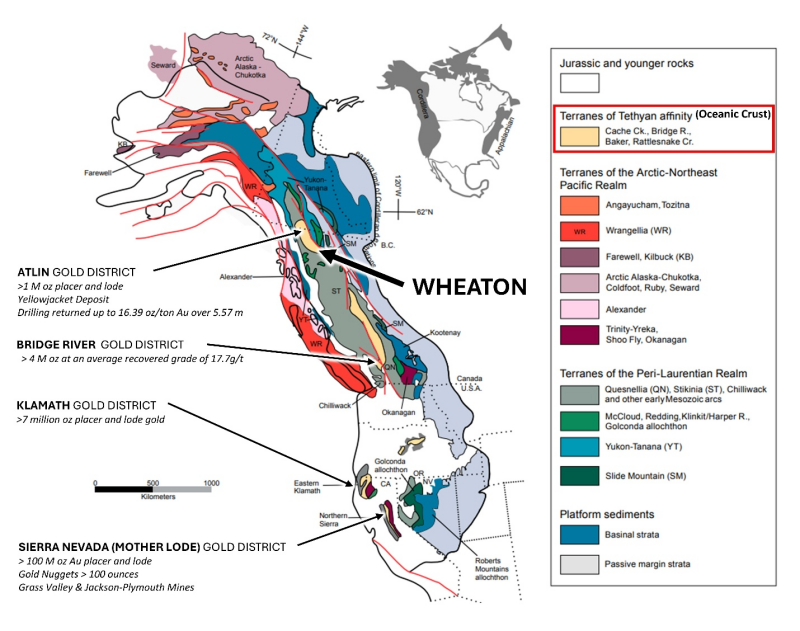




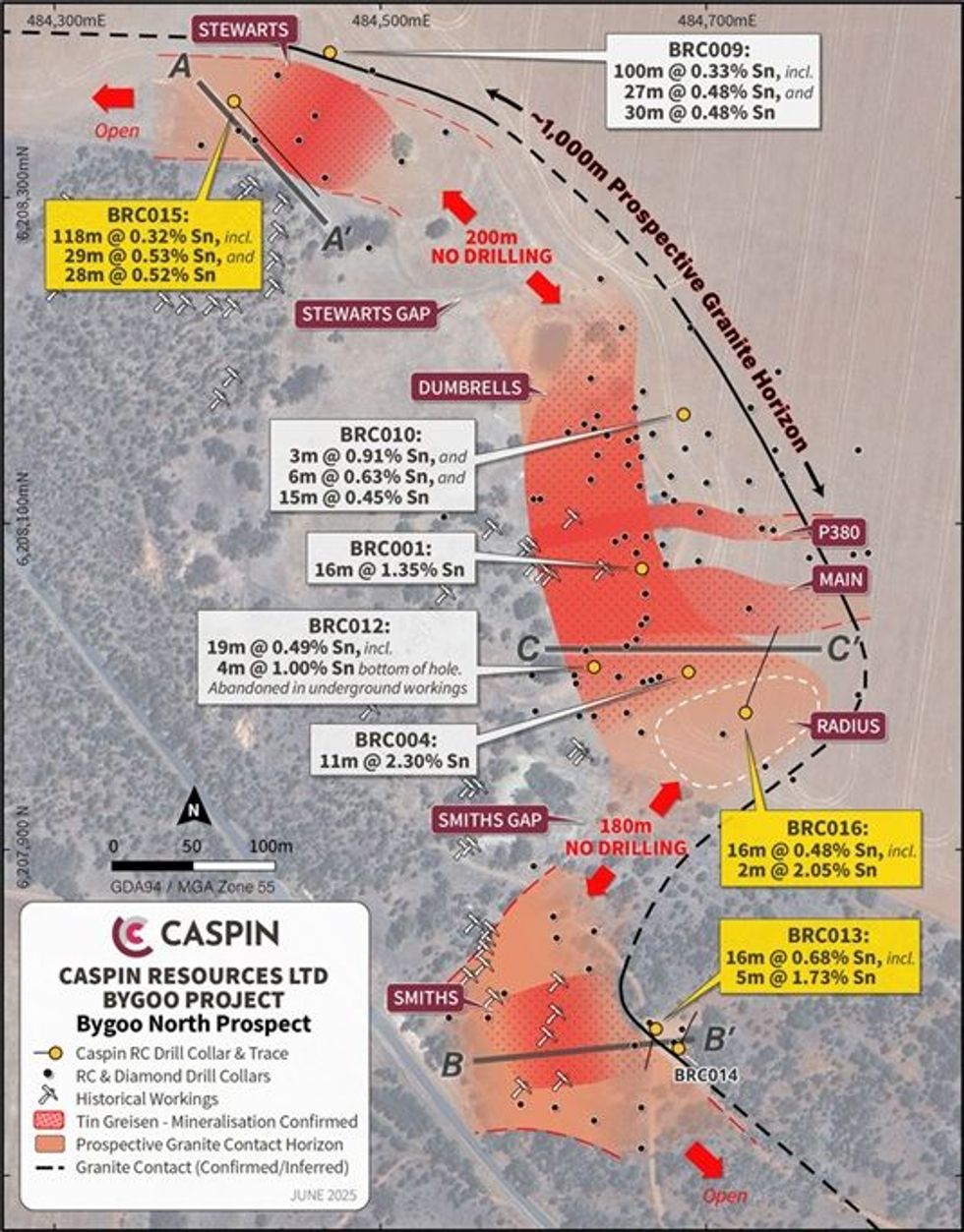 Figure 1. Location plan of mineralisation and relationship to granite contact at Bygoo North, with significant intercepts. The prospective granite horizon represents the potential for greisen mineralisation on the granite contact to approximately 100m below surface.
Figure 1. Location plan of mineralisation and relationship to granite contact at Bygoo North, with significant intercepts. The prospective granite horizon represents the potential for greisen mineralisation on the granite contact to approximately 100m below surface.